Soil Building: an investment in your garden
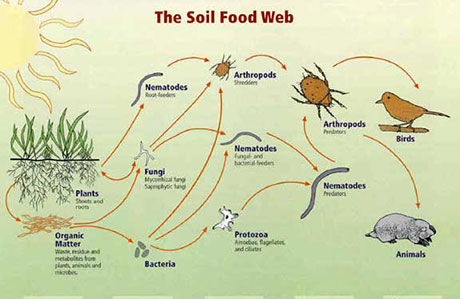
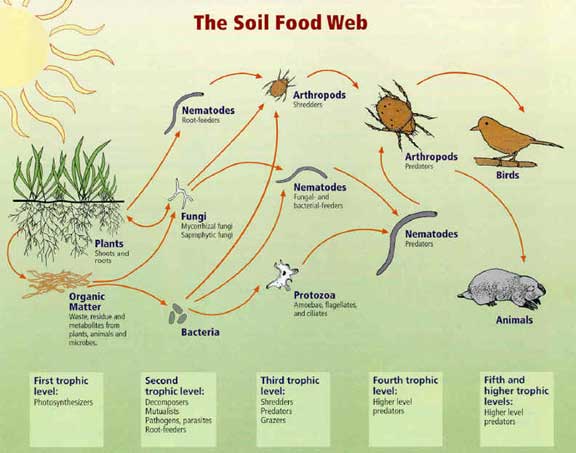
by Auveen Hajar, CMN student intern
As many Oregonians are faced with the pressing realities of the growing COVID-19 pandemic, health professionals constantly remind people on news and social media platforms to do one thing: stay at home! In the midst of these unprecedented times, Oregonians are finding themselves with little to do at home other than watching television or using their phones. Some people have been thinking about vegetable gardening. It’s a great time to get started, and learning the principles and methods of soil building will help you have success.
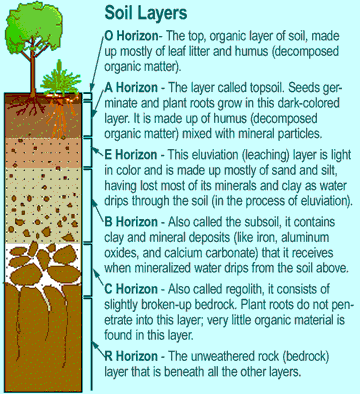
What is soil building and how does it help?
With an abundance of free time, now is the perfect time to begin thinking about the future of your garden. Soil building is when nutrients and soil amendments are added to your soil to make it healthier and improve its structure. With healthier soil, you will see that your garden is growing faster and with less trouble, because vegetables, fruits, and anything else you grow in your garden all grow better with healthier soil.
Understanding Your Soil
Soil is formed as rain, wind, and friction erode rocks into smaller pieces which are then mixed with organic matter decay. Minerals make up 95% of soil, meaning only about 5% of soil is organic matter—mainly decayed plant material. Despite its relatively low presence in the soil, organic matter is critical to creating healthy soil. The formerly living material must be constantly replaced so that the soil stays in good condition because it is a strong source of sulfur, nitrogen, and phosphorus, which are all important nutrients for soil to have. It also creates good soil texture, which is particularly important in our area which is dominated by heavy clay-like soil.
Despite the fact that soil seems solid, only half of the materials present in soil are actual solids. The other half is made up of air and water. In healthy soil, there is room for air between soil particles so that carbon dioxide and oxygen can freely move. This is why too much water for a plant is not healthy since it takes up space between the soil particles. For good soil, just enough water needs to be provided so that all of the soil particles are surrounded by some moisture.
How do I build my soil?
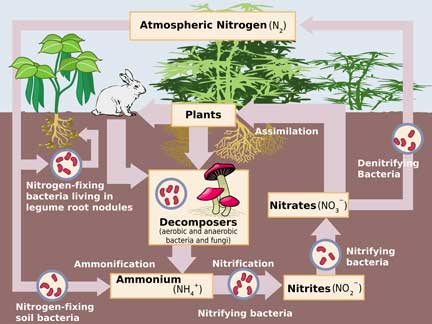
There are numerous ways you can make your soil healthier, like by adding fertilizer or soil amendments, planting cover crops, and adjusting the pH level of your soil. Generally, most vegetables prefer slightly acidic soil, between 6.0 and 7.0 on the pH scale. In order to apply this strategy it is required that you know the pH level of your soil. This can be determined by using a pH testing kit or by taking a soil sample to the Oregon State Extension Service’s office, but since these resources are likely not available given the concerns over the COVID-19 pandemic, it may not be practical to work on soil pH until later.
Fertilizer and soil amendments are accessible resources that can be added to your soil right now. While many stores are closed, several local nurseries are open for curbside pickup with online ordering (Cornell Farm, Dennis 7 Dees), and Home Depot has committed to remaining open with only slightly adjusted store hours, making it easy to buy soil amendments.
You can add organic material to your soil by using commercial products such as peat moss, but the best way, for the planet and to save money, is to begin to compost your kitchen and garden waste. Tualatin Soil & Water Conservation District has great information to help you get started, or to improve your existing composting practice. Now is a great time to get started!
Another effective strategy for creating healthier soil is planting cover crops, which are crops that are planted for the purpose of amending the soil rather than being used for harvest. Cover crops effectively deal with weeds, slow erosion, and enhance soil health. Legumes like soybeans, peas, and other beans add nitrogen to the soil with their root nodules, and are included in most cover crop seed mixes. They are generally planted in the fall, so plan to do that later this year.
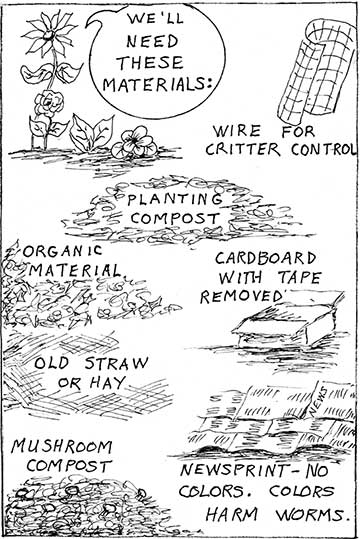
the “lasanga garden” technique
What does healthy soil look like?
The health of your soil is defined by how well it can support animal and plant life. The color and moisture of your soil is generally a good indicator of how healthy and effective your soil actually is. Darker soil generally means that more organic matter is present, which is a good indication. Additionally, a slight amount of moisture to keep the soil fertile and not allow it to dry is also a great way to maintain soil’s health. Lastly, animal activity—like a presence of worms—is also a good indicator of soil health.
If you need more space for a vegetable garden, there’s a great technique you can use to convert lawn to healthy soil that will let you plant some crops fairly soon. Create a “lasagna garden” with this information from a past issue of the News.
West Multnomah Soil & Water Conservation District has a page with information and references for soil health.
Tending to your garden during this time of uncertainty can relieve stress by giving you some control over something! With so much spare time, it is great to be able to invest it into seeing results for your garden while also adhering to social distancing guidelines. It is important to remember that continued tending of your soil will pay off. All in all, adding new fertilizer or planting cover crops in a timely manner can help prevent the growth of weeds and prevent erosion, and making sure that the soil receives the right amount of water will ensure that your soil is long lasting and healthy. Soon enough, you will begin to see results that will lead to a flourishing garden and nutritious crops.





